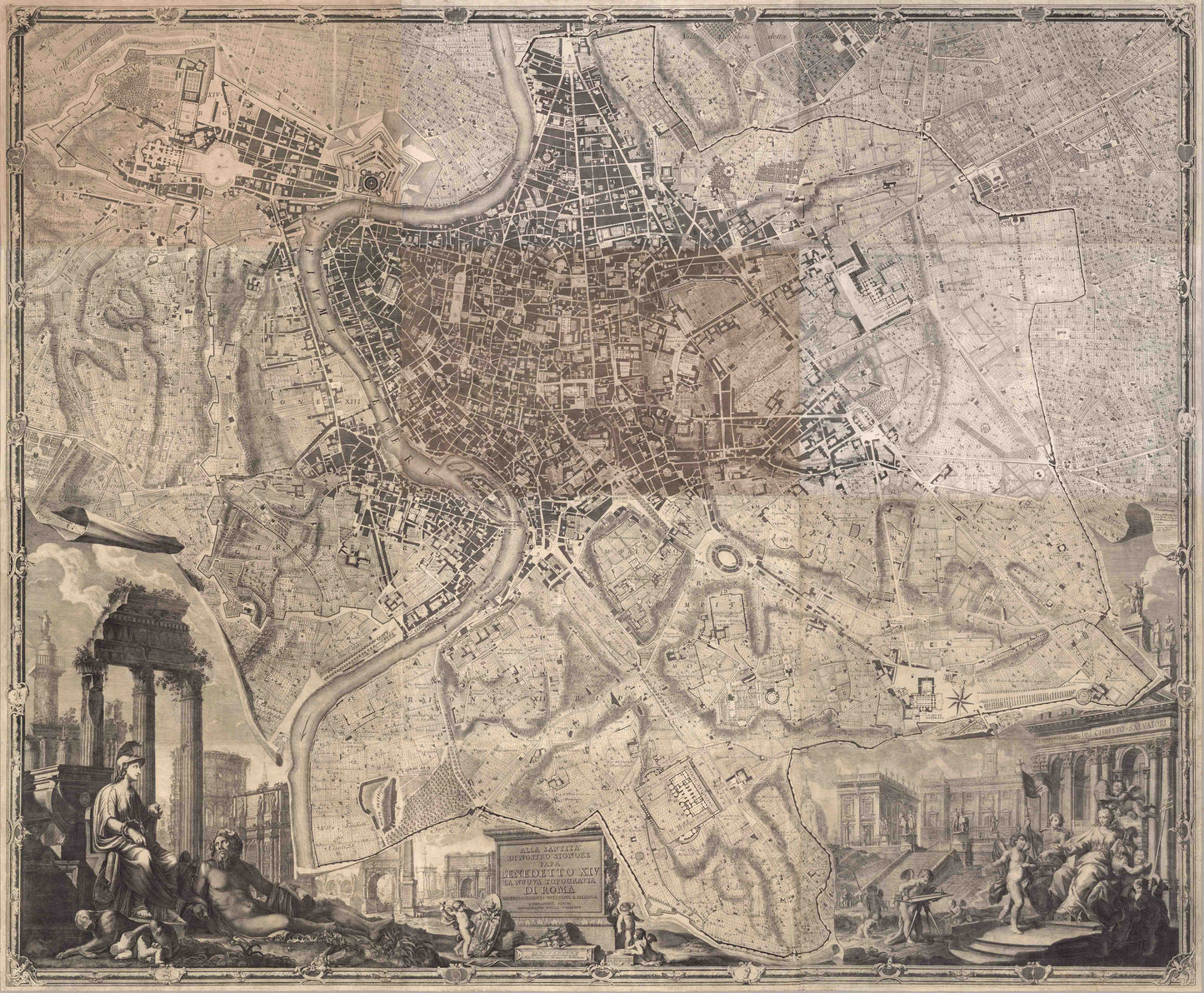from: 1016 Map Inventory
Nolli, Giovanni Battista (1701-1756). Nuova Pianta di Roma data in Luce da Giambattista Nolli l'anno 1748. Rome: 1748.
Nolli, Giovanni Battista (1701-1756). Nuova Pianta di Roma data in Luce da Giambattista Nolli l'anno 1748. Rome: 1748.
Couldn't load pickup availability
Giovanni Battista Nolli (1701-1756)
Nuova Pianta di Roma data in Luce da Giambattista Nolli l'anno 1748
Rome: 1748
70 7/8" x 110 5/8" sheet
A celebration of both ancient and modern Rome, Giovanni Battista Nolli created Nuova Pianta di Roma… to showcase the epicenter of Italy. Published in 1748, Nolli’s map exhibits nearly eight square miles of the city, and some surrounding terrain. Through this map, Nolli provided a highly important record of Rome in the midst of the city’s heyday. Rome during the mid-eighteenth century was a mecca for cultural institutions and blossoming scientific ideas.
Initially born in the province of Como in April of 1701, but later moving to Milan as an adult, and subsequently Rome, Nolli spent his time in Italian cities initially working as an architect. Nolli spent time working on the churches of Sant’Alessio and Santa Dorotea in Rome before providing his remarkable contributions to the field of cartography. Rome, being an independent papal-state during the 1700s led to generous and frequent contributions by the popes – some of the most important patrons of the art. Pope Benedict XIV commissioned Nolli to create this map of Rome as a means to establish clear borders of the rione, the different regions in Rome at the time.
Leonardo Bufalini, a cartographer who predated Nolli, had created the most celebrated and important map of Rome until Nolli’s Nuova Pianta di Roma… Nolli built off Bufalini’s pre-existing revolutionary map that was the first large-scale map of Rome since antiquity. Even more notable, Nolli’s map was drawn to scale. Moreover, Nolli’s map reflects the advancements that Bufalini had made, but Nolli built upon these previous contributions to go a step further.
Comprised of twelve copperplate engravings, Nuova Pianta di Roma documents significant streets, churches, palaces, piazzas, and even drains and cemeteries in the city. The process for Nolli took over ten years to complete. Beginning in 1736, Nolli began surveying the city. Then and now Nolli’s map of Rome was majorly celebrated for its accuracy and thoroughness. It is considered the first scientific rendering of Rome.
On either side of the bottom of the map, Nolli created two large cartouches that are allegorical scenes. On the left side of the map are Minerva and Tiberinus – Roman classical figures each with large, individual significance. Both Minerva and Tiberinus are tied to Rome’s identity, values, and geography, making them critical additions to any map of Rome, especially one done in the eighteenth century at the height of neoclassicism. Minerva, as the Goddess of wisdom, represents strategy, warfare and ghe arts, as well as law, governance, justice and culture. In cartography, Minerva is often symbolic of the protector of cities and the guardian of civilization. Tiberinus, the Roman river god of the Tiber, signifies Rome’s geography and lifeblood. Together, the pair exemplify the long-standing cultural legacy of Rome.
On the bottom right side of the map is an enthroned woman surrounded by cherubs. On the temple behind her there is an inscription that reads: “DIVO. CHRISTO. SALVATORI,” Latin for “To the Divine Christ the Savior," showcasing the importance of the Catholic Church in Rome. Notably, this inscription also identifies the structure as the Archbasillica of Saint John Lateran – the cathedral of Rome and the official ecclesiastical seat of the Pope. At the center of the map, Nolli honored Pope Benedict XIV by dedicating this map to him.
Giovanni Battista Nolli embarked on a mission not solely to showcase Rome’s geography, but also to conceptualize the city through its most important ideals – religion, neoclassical thinking, and Enlightenment practices.


